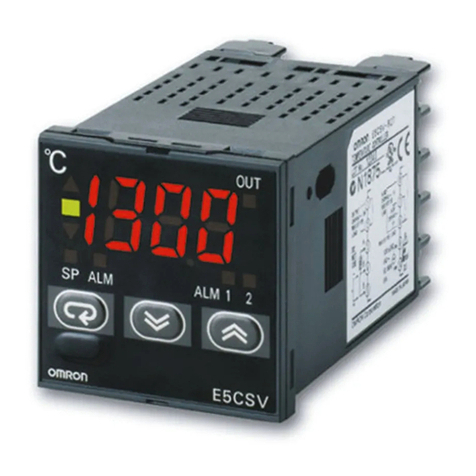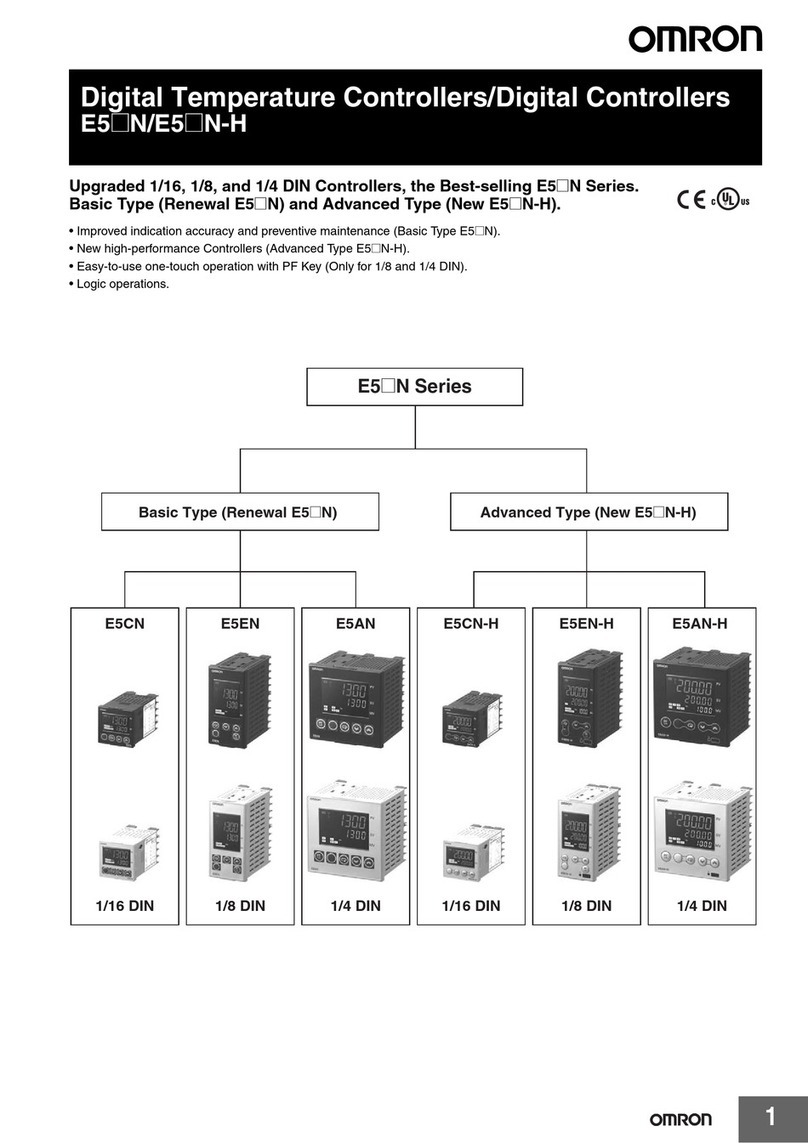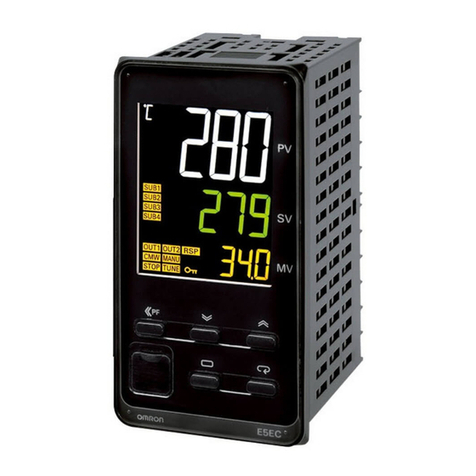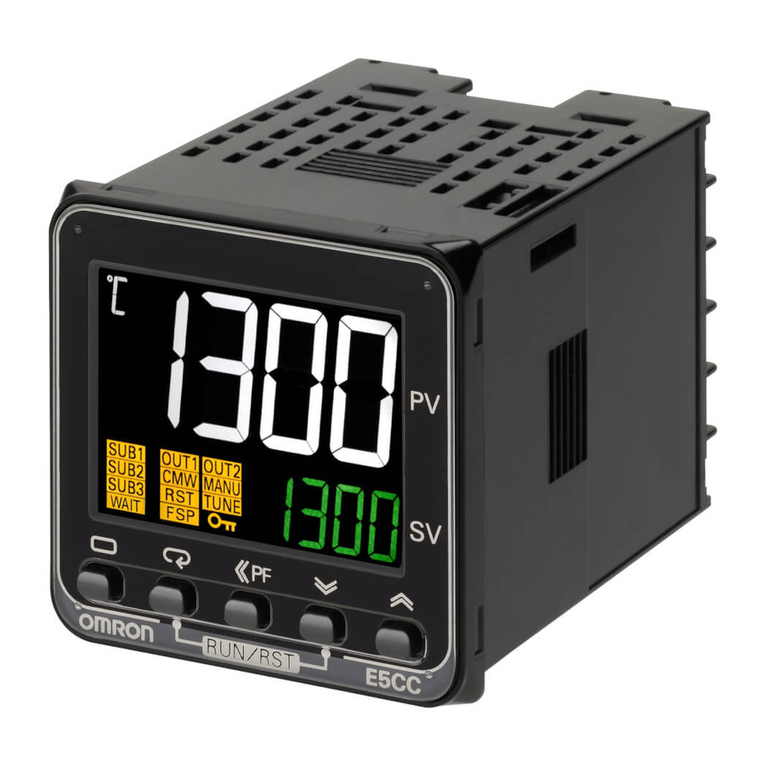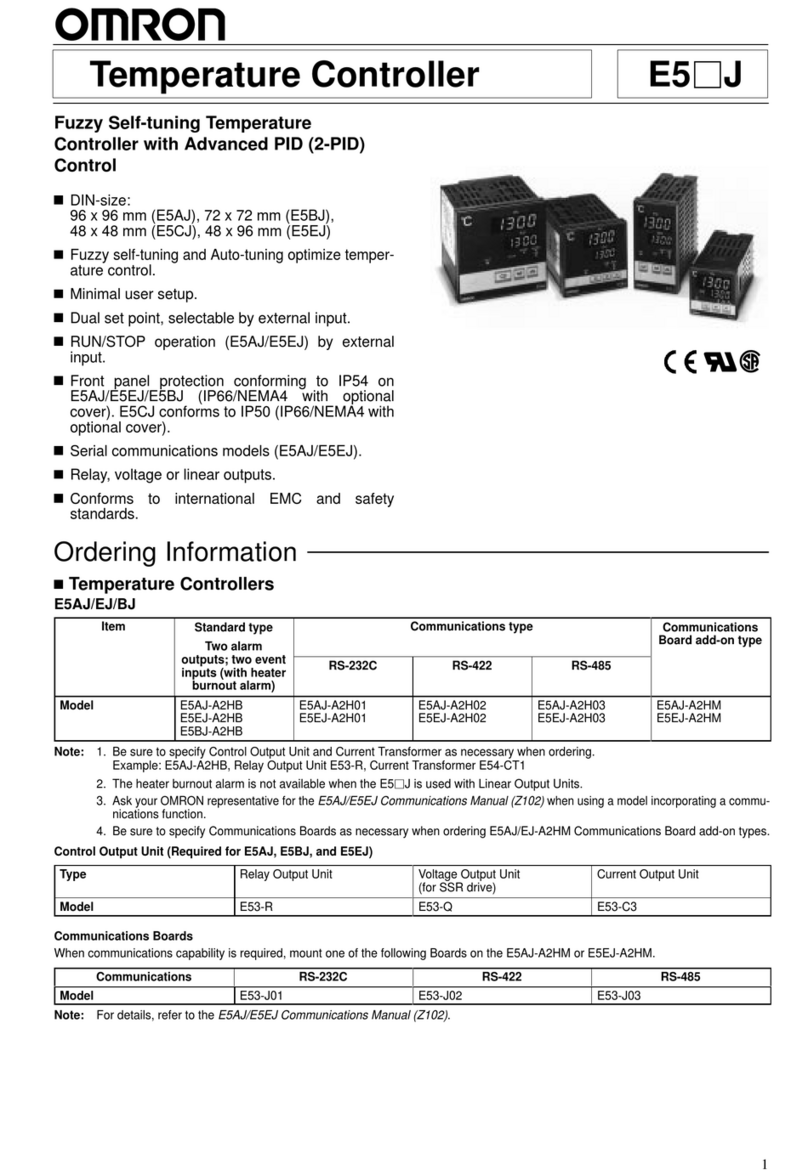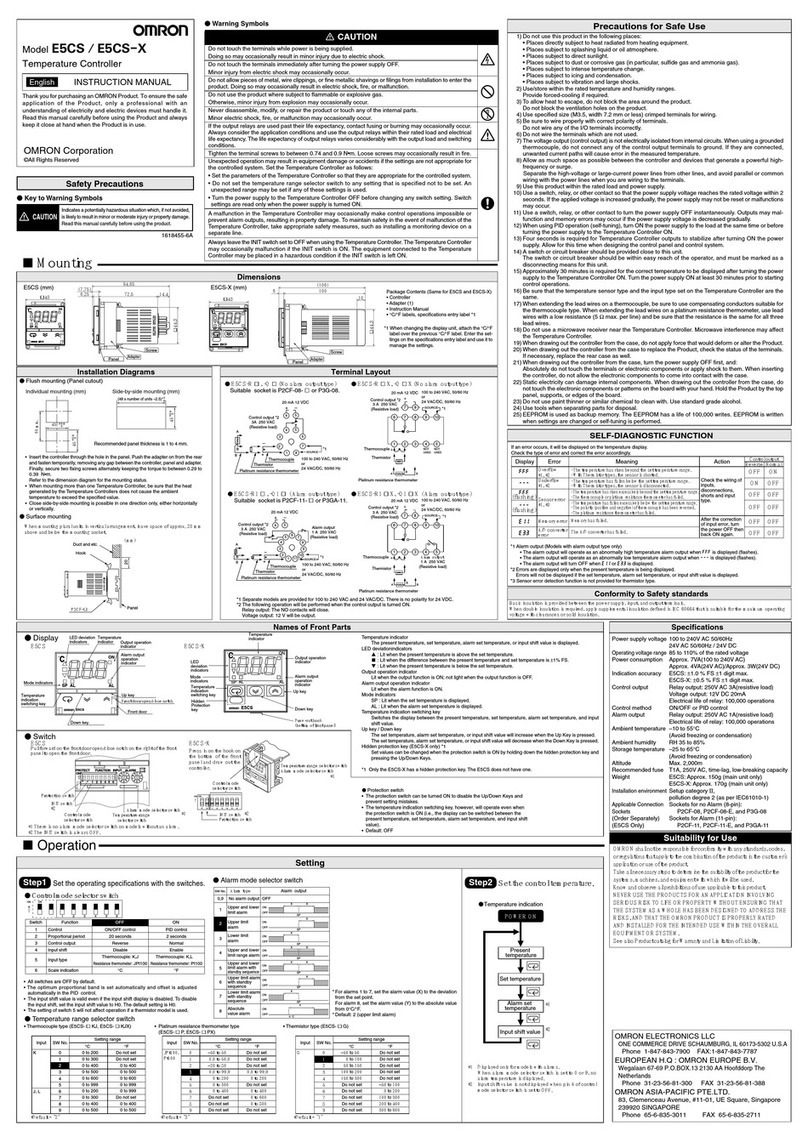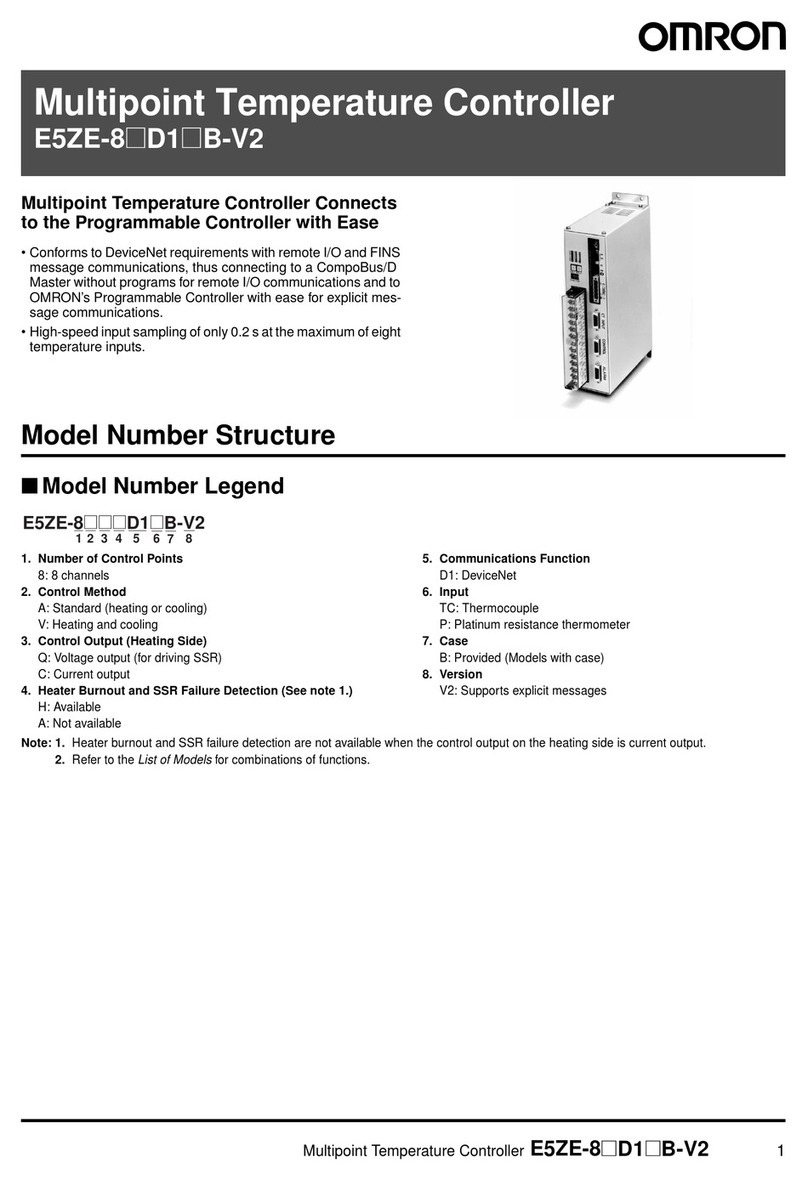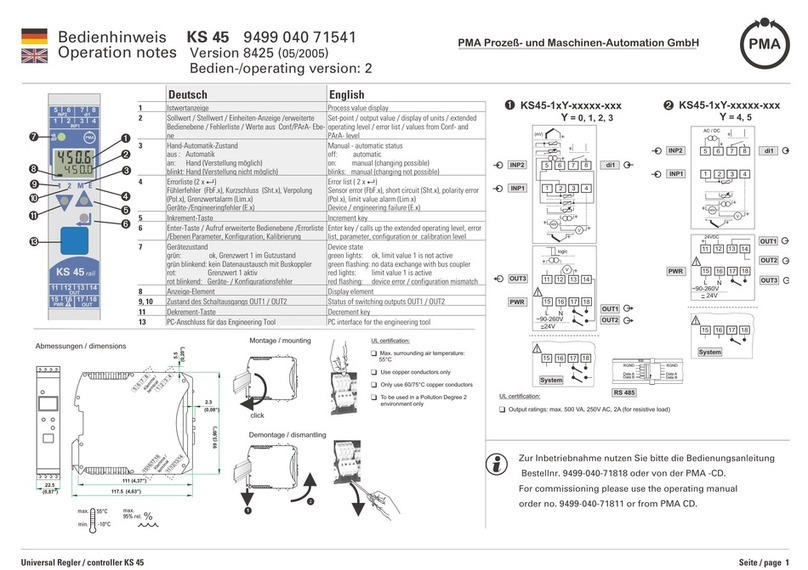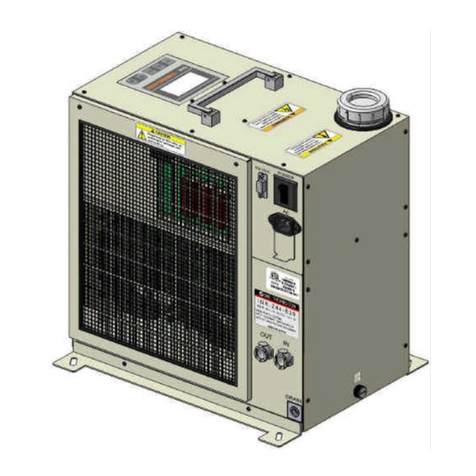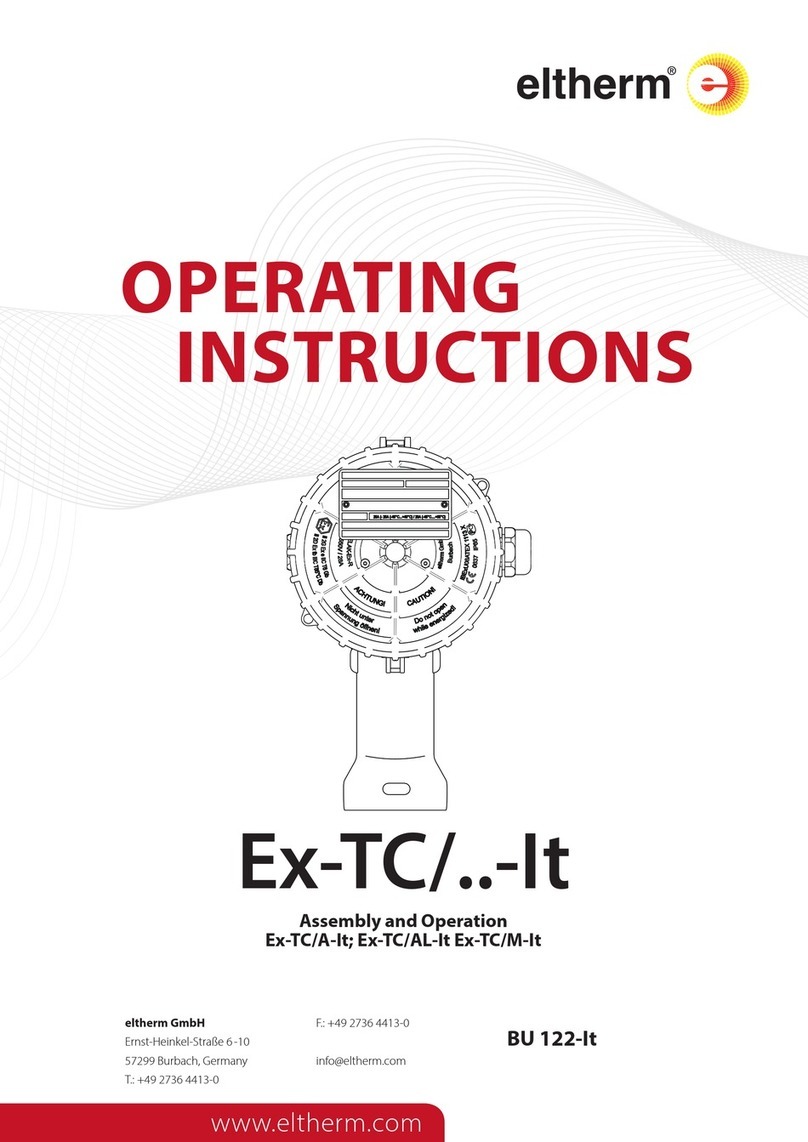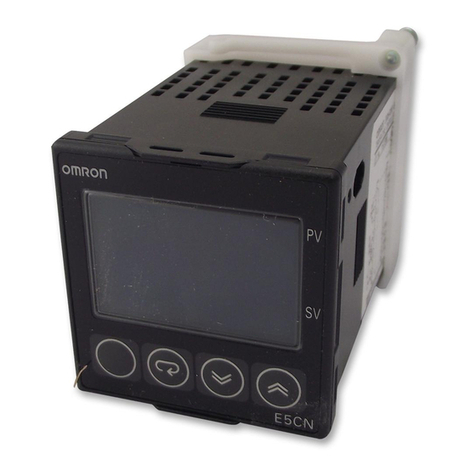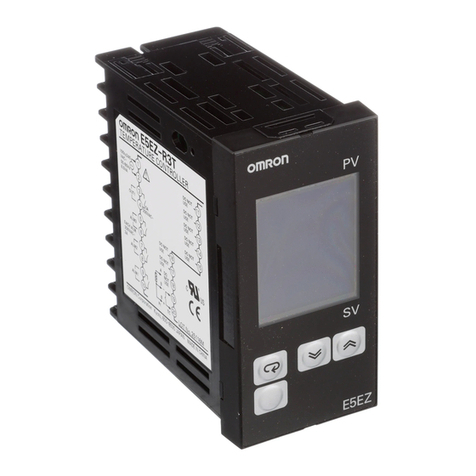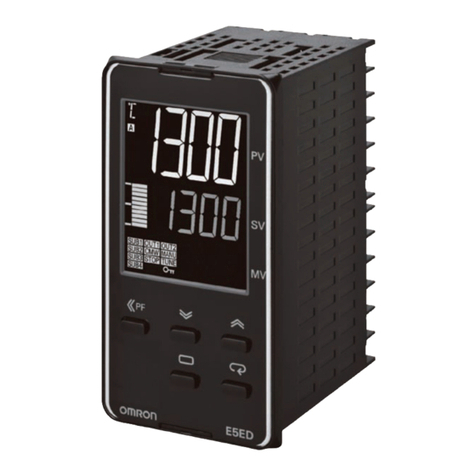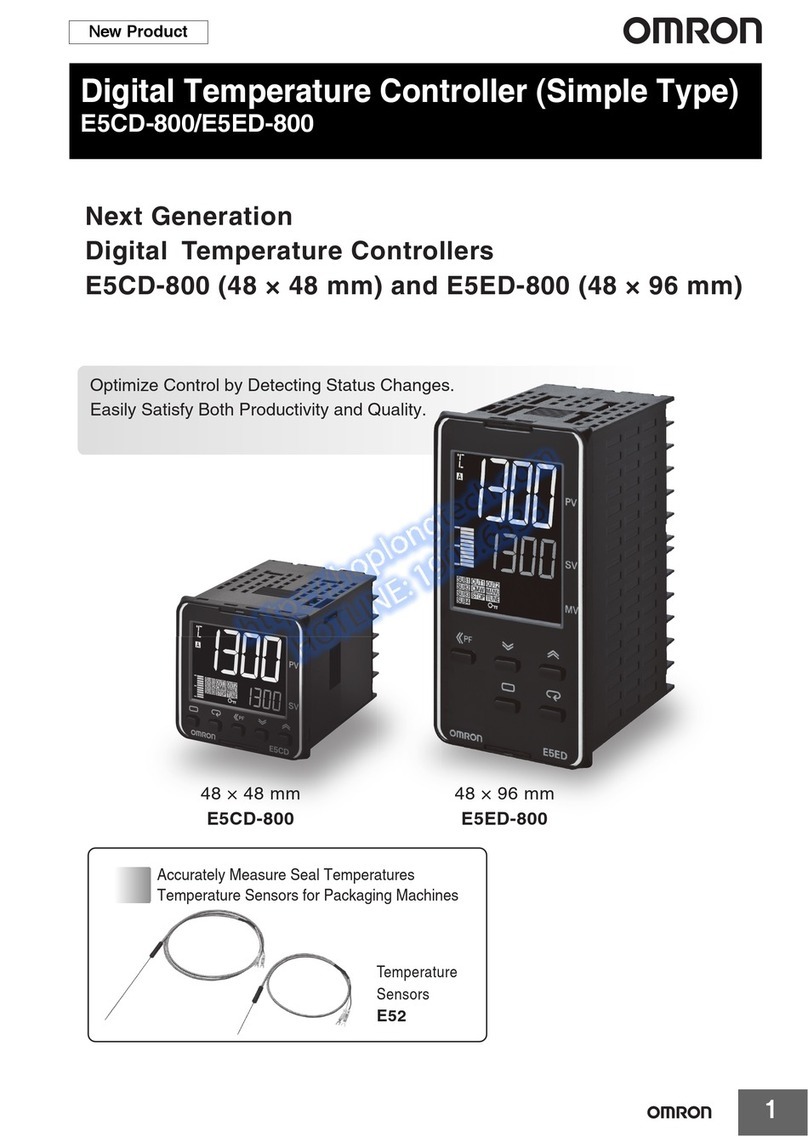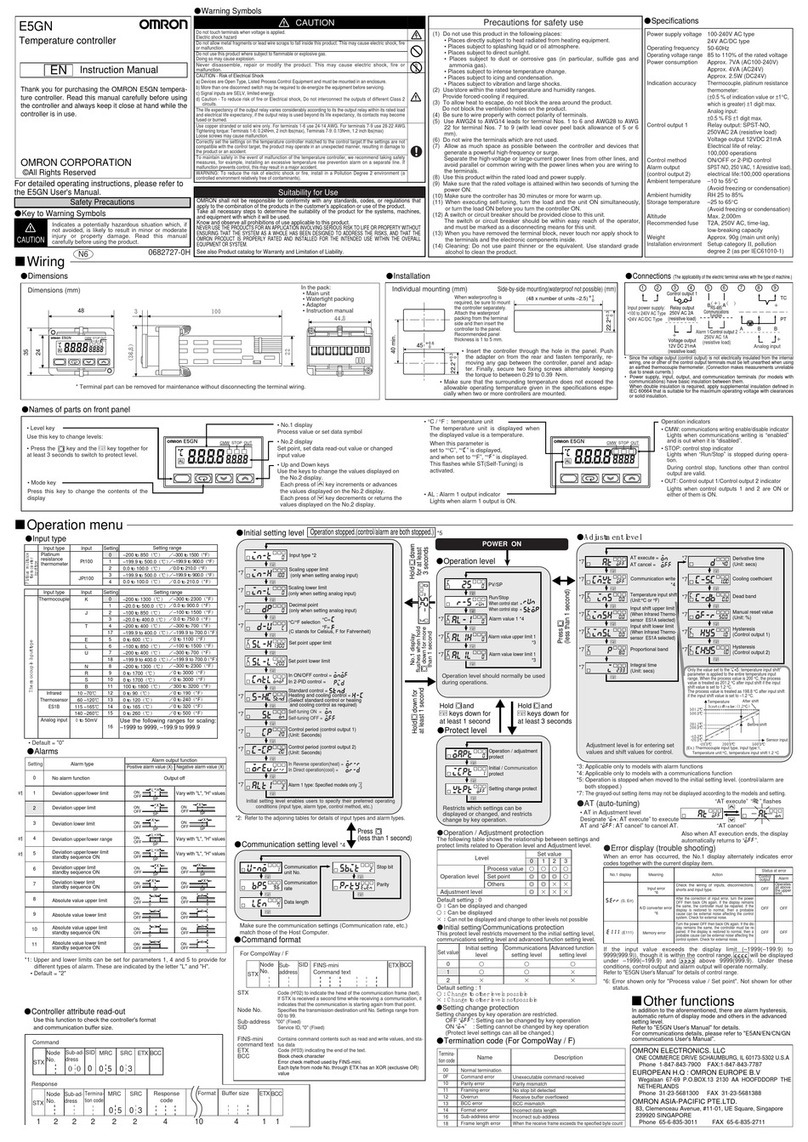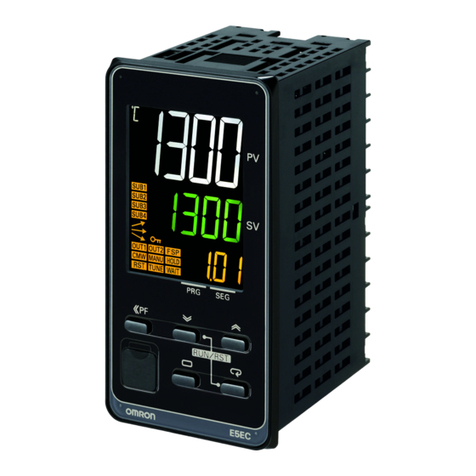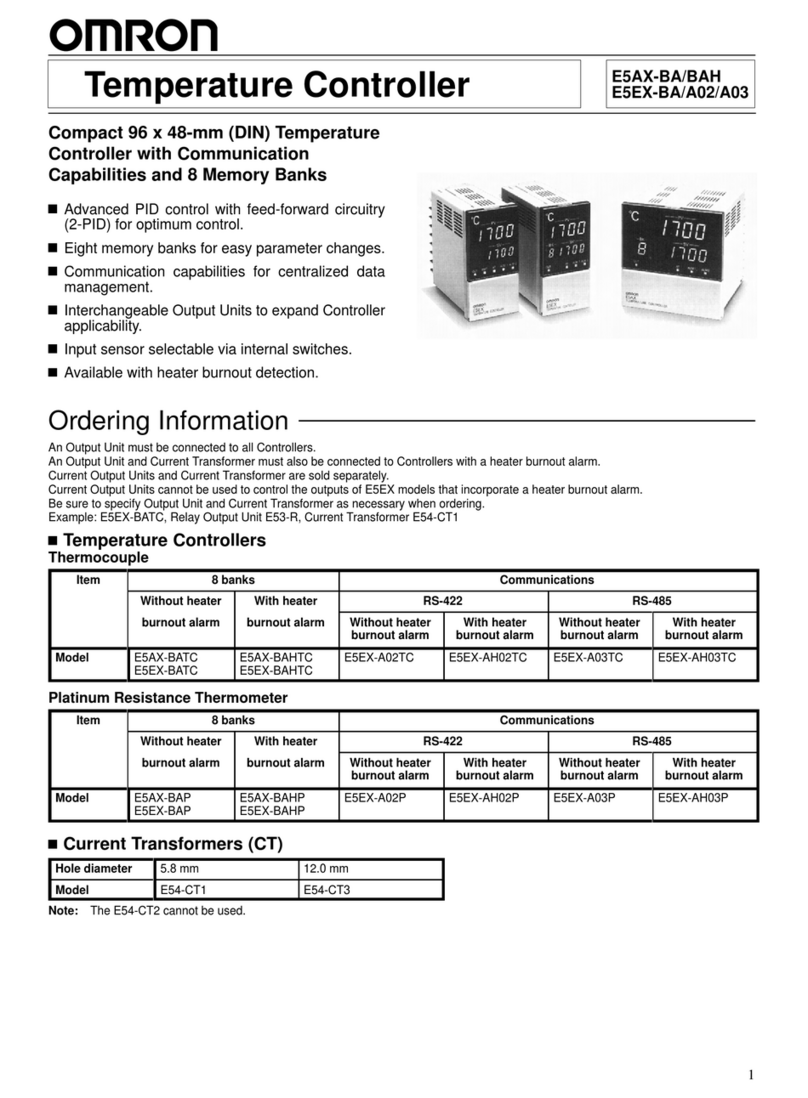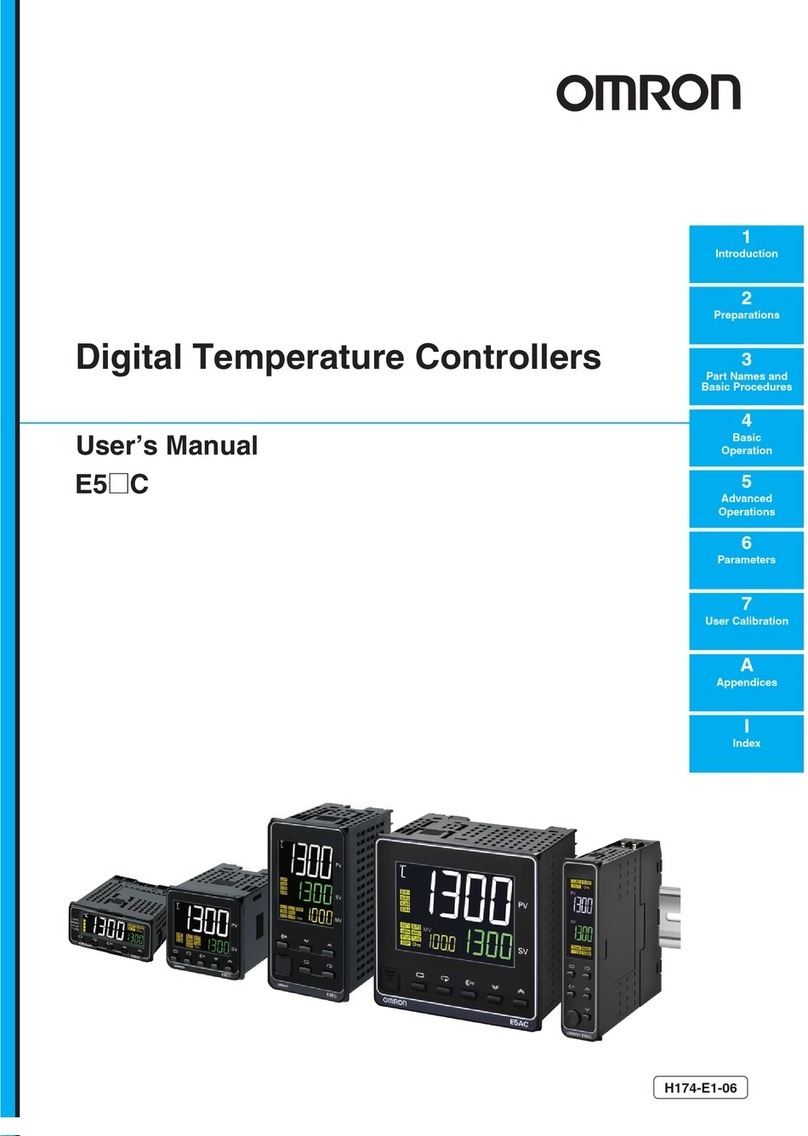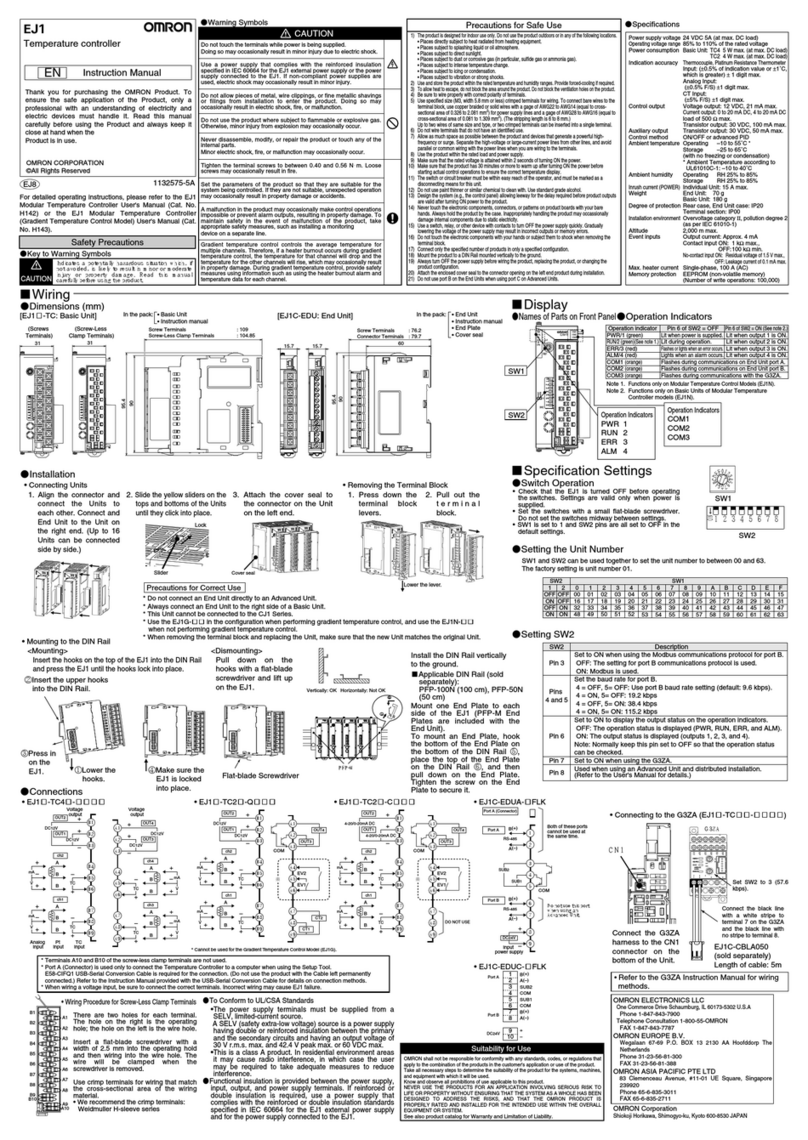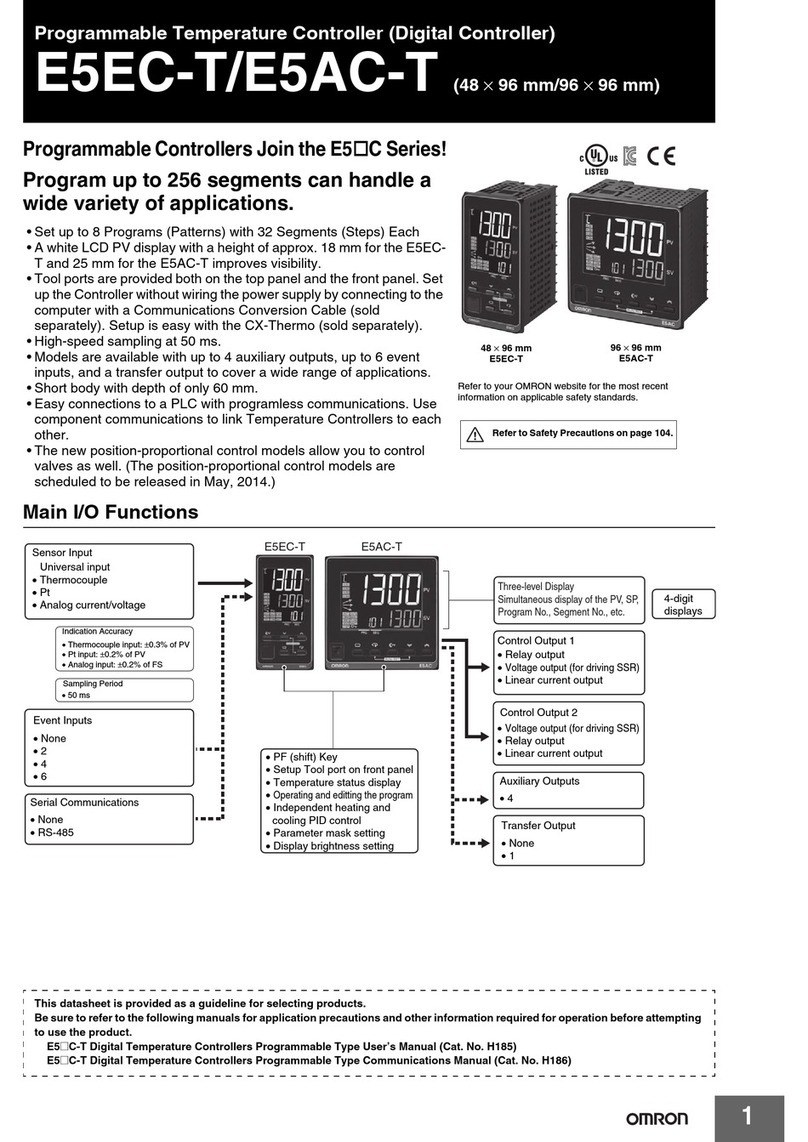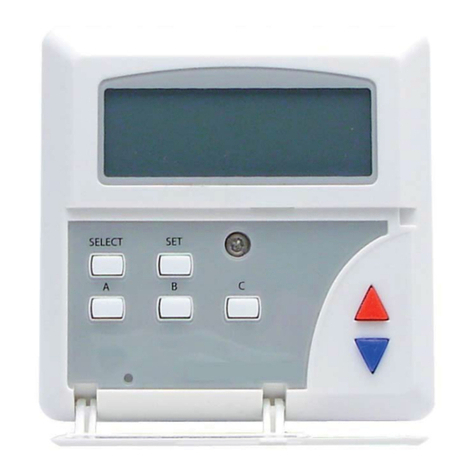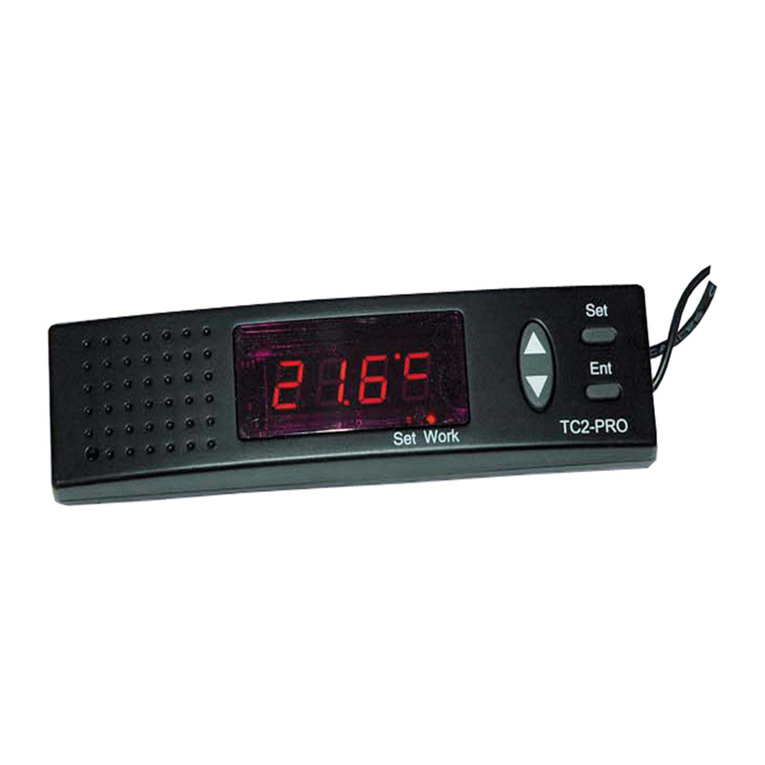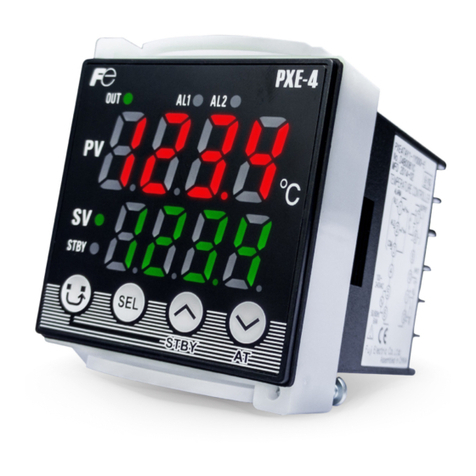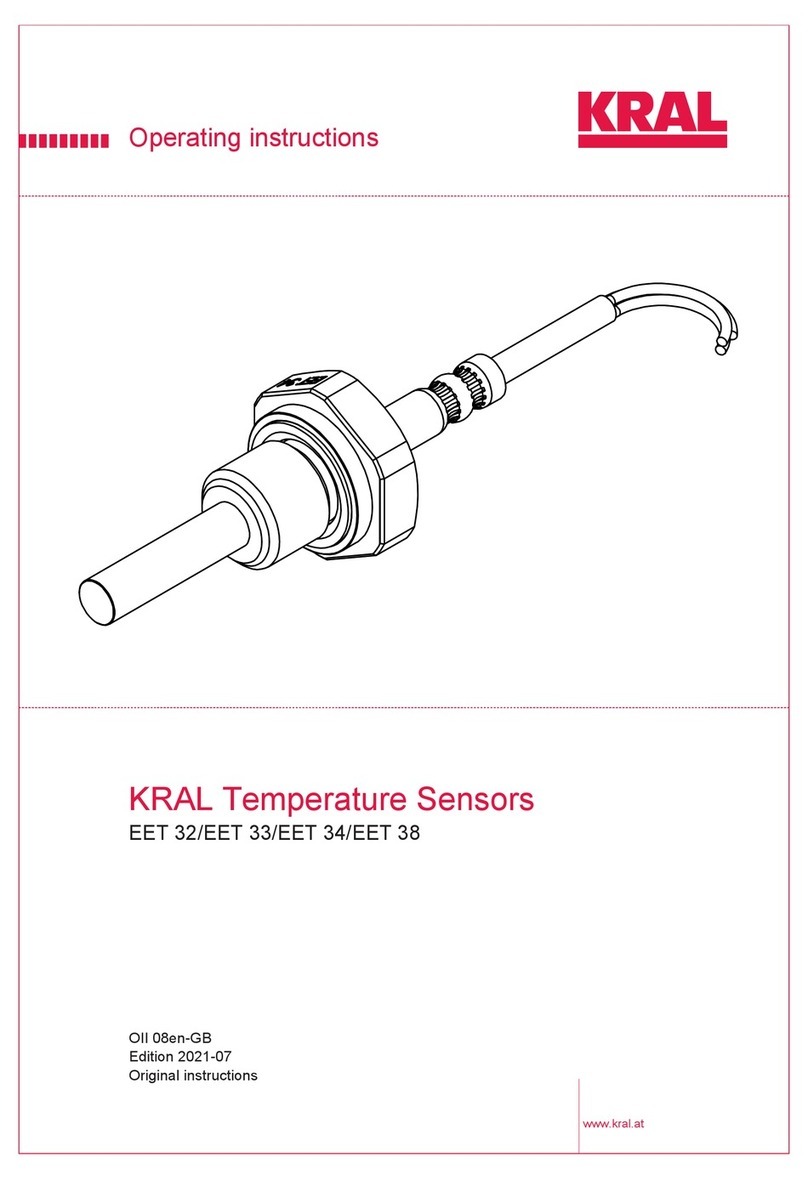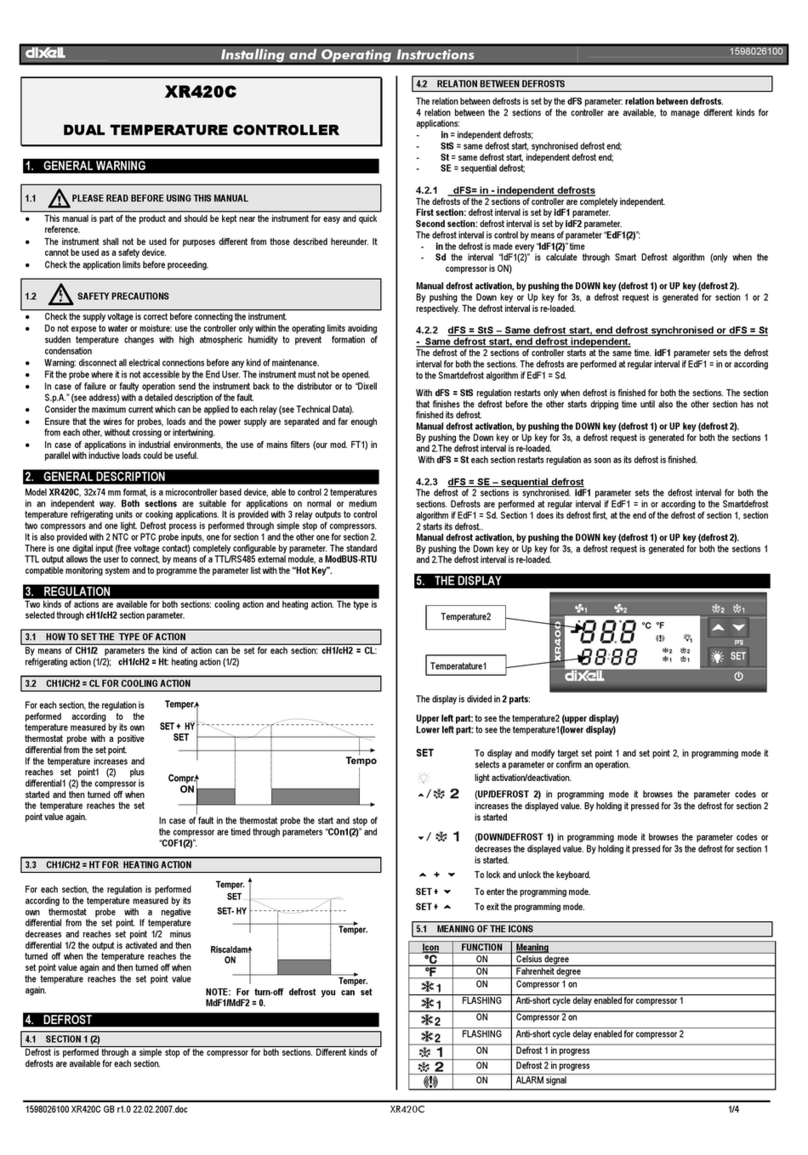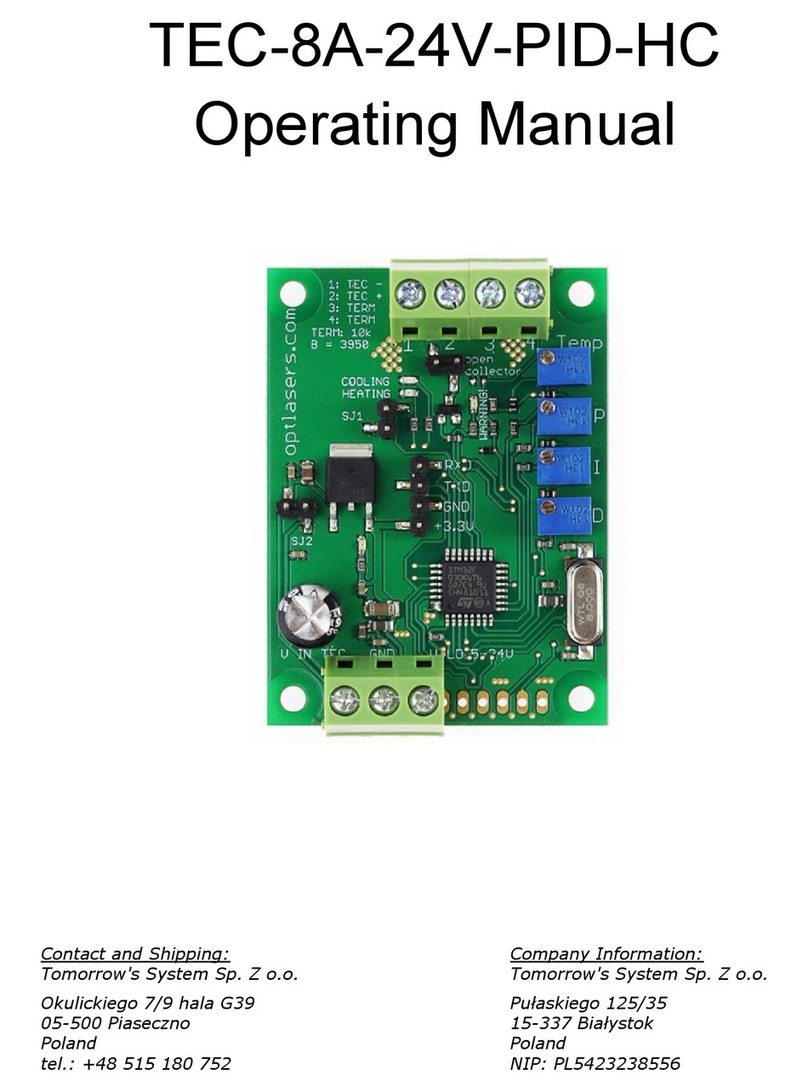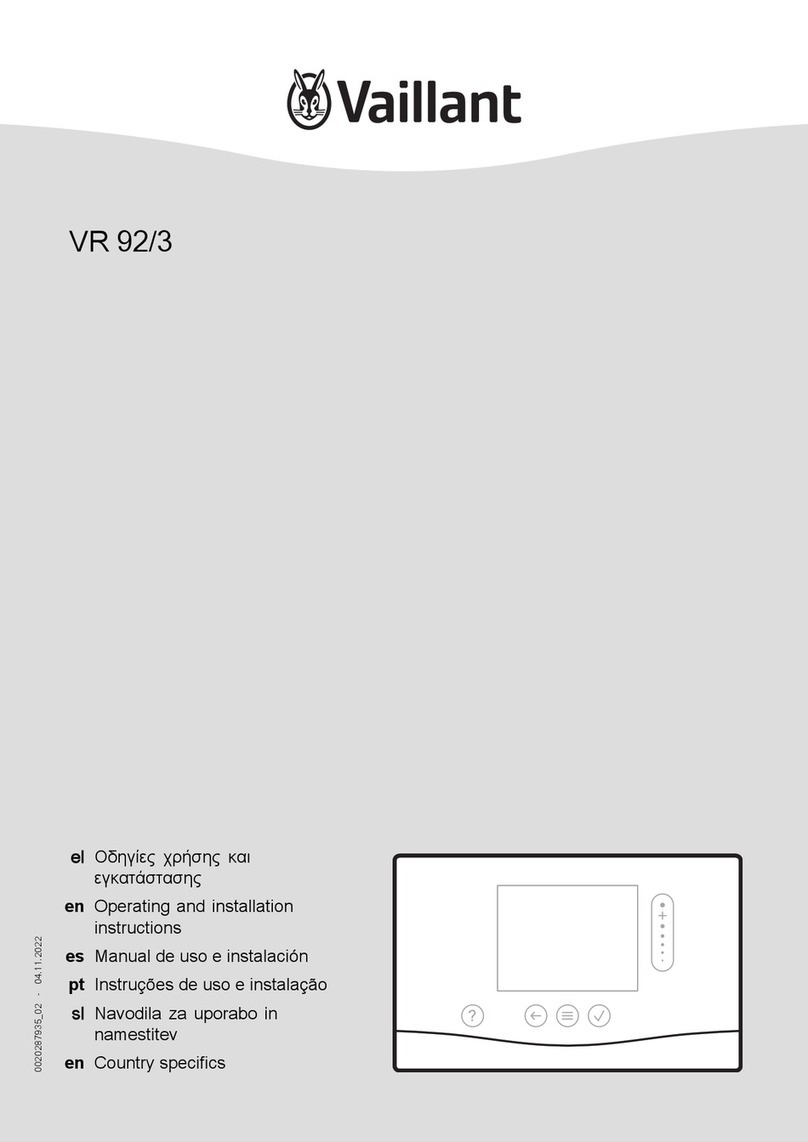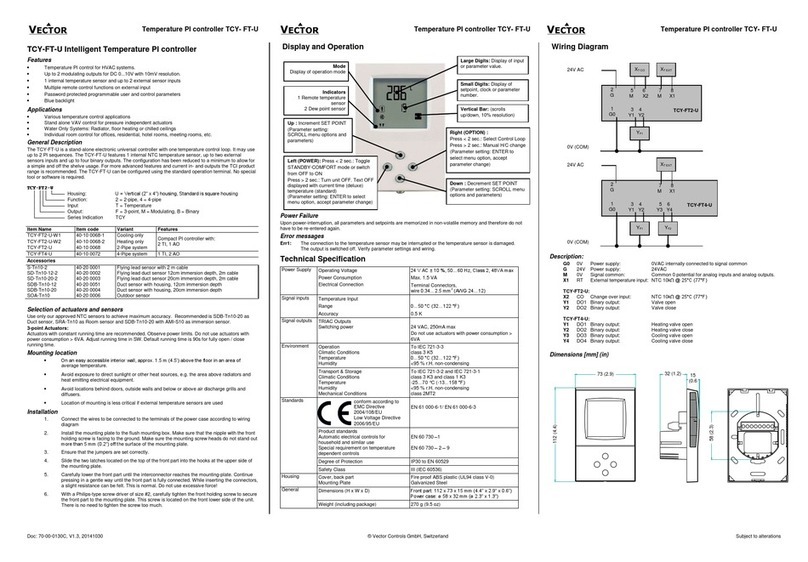
E5AX-P E5AX-P
7
Motor Calibration: calb
The following setting are used to set the opening/closing time for controlling valves. Always set the following parameters when installing the
controller. If a display is required for valve position, set the open and close positions at the same time.
–200
sl–l
calb
fr–l
fr–l
mot
30
Press a.
Press a.
Press a.
Press a.
Press the UP and Down
keys simultaneously.
Lower setting limit
Motor calibration display
Count value
Count value
Fully open position
Fully close position
Fully open/close time
PV
SV
a
Settings when Not Using a Potentiometer (No Valve Position
Display)
1. Turn on power and press the Level Key for at least two
seconds. sl–l will be displayed. Then press the Display Key
until calb is displayed.
This is the initial mode when power is turned on for the first
time.
2. Simultaneously press the Up and Down Keys for at least one
second. fr–h will be displayed and the OPEN output will turn
ON.
3. Press the Display Key. fr–l will be displayed, the OPEN output
will turn OFF, and the CLOSE output will turn ON.
4. Press the Display Key. mot will be displayed and the CLOSE
output will turn OFF. While mot is displayed, use the Up and
Down Keys to set the fully open/close time to a value between
1 and 999 s in the units of 1 s.
5. Press the Display Key. sl–l will be displayed and motor
calibration will be complete. Press the Level Key for at least
two seconds, confirm that in–t is displayed, and then press
the Level Key again for at least two seconds to display the
process value and return to the initial display mode.
Settings with a Potentiometer (with Valve Position Display)
1. Turn on power and press the Level Key for at least two
seconds. sl–l will be displayed. Then press the Display Key
until calb is displayed.
This is the initial mode when power is turned on for the first
time.
2. Simultaneously press the Up and Down Keys for at least one
second. fr–h will be displayed, the OPEN output will turn ON,
and the valve will start to open. Press the Display Key as soon
as the valve stops by the limit switch built into the motor. The
count value for the fully open position will be set.
3. Press the Display Key. fr–l will be displayed, the OPEN output
will turn OFF, the CLOSE output will turn ON, and the valve
will start to close. Press the Display Key as soon as the valve
stops by the limit switch built into the motor. The count value
for the fully close position will be set.
4. Press the Display Key. mot will be displayed and the CLOSE
output will turn OFF. The automatically set fully open/close
time will be displayed. Use the Up and Down Keys to adjust
the setting if required (value must be between 1 and 999 s in
the units of 1 s).
5. Press the Display Key. sl–l will be displayed and motor
calibration will be complete. Press the Level Key for at least
two seconds, confirm that in–t is displayed, and then press
the Level Key again for at least two seconds to display the
process value and return to the initial display mode.
WARNING
Never calibrate the motor during control operation. Make sure
that control operations have been stopped before calibrating.
Note: 1. The output mode cannot be changed in motor calibra-
tion mode.
2. If the fully open position is less than the fully closed posi-
tion, the value position will not be displayed and the dis-
play will show “a––– ” for automatic and “m––– ” for manu-
al operation. If a potentiometer is not being used for
feedback, press the Display Key at steps 2 and 3 without
regarding the position of the valve and then set the fully
open/close time. Here too, the display for value position
will show “a––– ” for automatic and “m––– ” for manual
operation.
